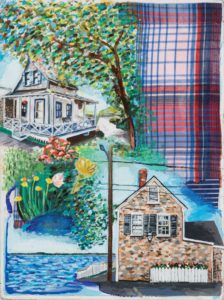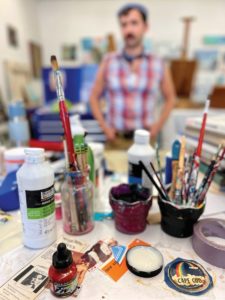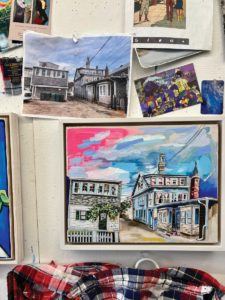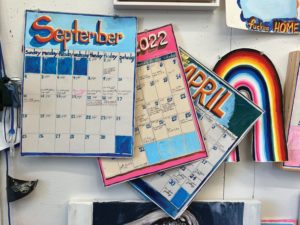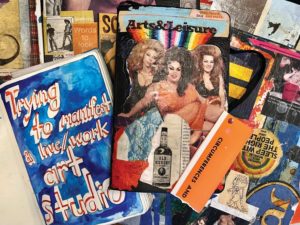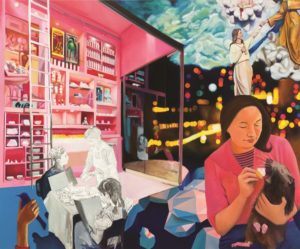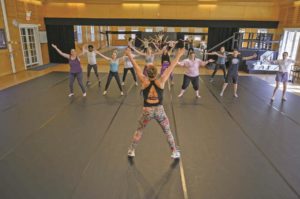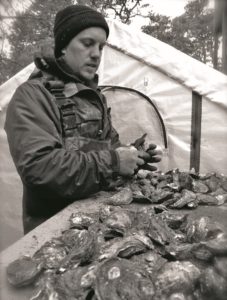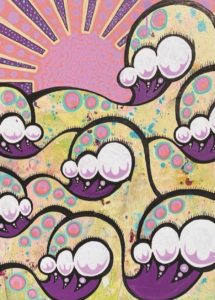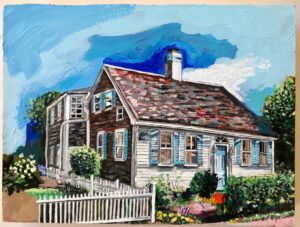It’s a warm Tuesday morning in Provincetown and artist Paul Rizzo is wearing knee-high athletic socks with garters, a royal blue vintage speedo, a black leather chest harness, and a red polyester Superman cape with a Provincetown basketball jersey sewn onto the back to weigh down the fabric.
“Now it floats just right when I’m riding my bike,” he says as he fastens the cape around his neck.
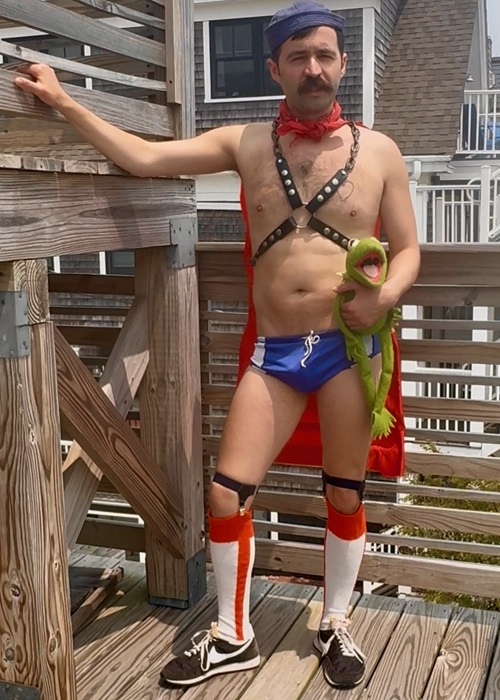
In his cubby-like Commercial Street apartment, the Speedo and cape compete with myriad personal effects for a visitor’s attention. Every wall and tabletop doubles as a mood board, strewn to overflowing with Rizzo’s paintings, clippings from vintage magazines, stuffed animals, fashion accessories, and keepsakes from the past.
Surveying the space, it’s hard to tell where Rizzo’s art ends and where his wardrobe begins: each informs the other in a playful feedback loop of colors, textures, and pop culture references. The result? A bold but charming personal style that makes him one of Provincetown’s fashion originals.
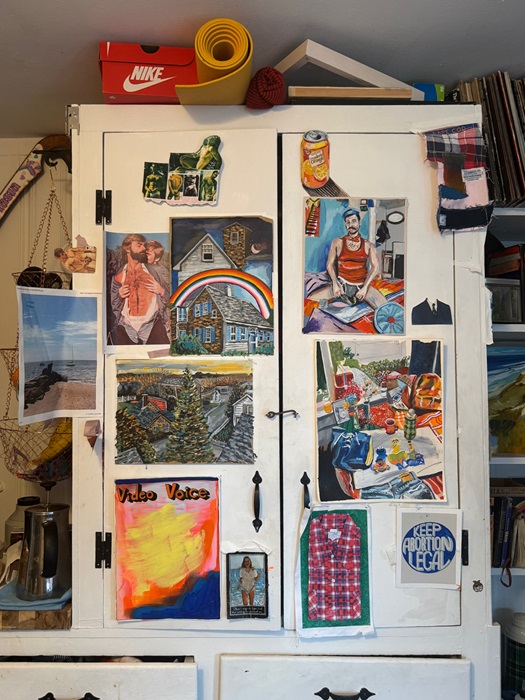
There is no such thing as a Paul Rizzo uniform. One day he will wear a fire-engine-red jumpsuit, the next, short shorts and shirt from his uncle that he refashioned into a tank top. The only real constant is a tight-fitting blue cap, which he admits has become a trademark piece.
For an art opening at 411 Gallery last year, owner Liz Carney organized a surprise “Night of a Thousand Pauls” celebrating Rizzo, who arrived in town from New Orleans in 2011. The room was full of friends and fans sporting facsimiles of his signature mustache and cap, and vintage striped socks were provided for those who came unprepared.
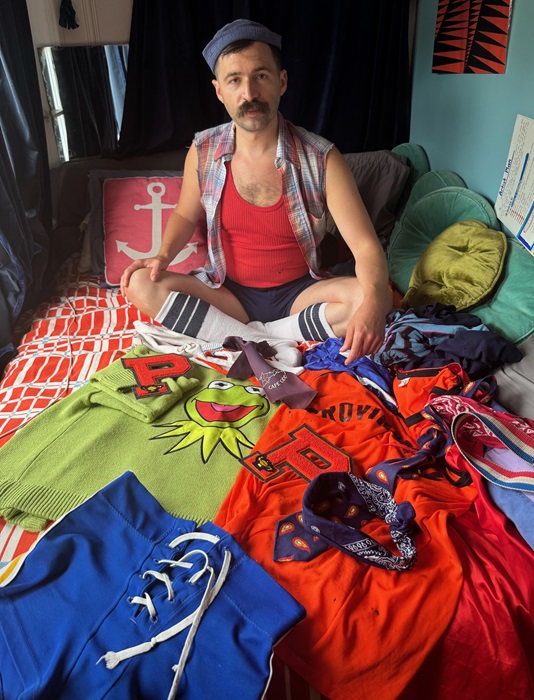
As we peruse his closet, certain themes emerge: bright primary colors, rainbows, gym socks, and leather gear. All of his outfits are grounded in the past — the place Rizzo says he calls home. Some pieces are mementos: shirts inherited from his father and uncle, and a whole collection of vintage patches from Provincetown High School. And they all include references to pop culture. Rizzo has a knack for juxtaposing the rough edge of 1970s gay leather culture with the warmhearted innocence of a Jim Henson Muppet. His style is Super Grover by way of Tom of Finland — both, he says, have been influences.
With his outfit fully settled, he starts outside for pictures, but he turns back for one last piece: a plush Kermit the Frog doll that Rizzo clutches under his cape and against the straps of his leather man’s harness. In the bright summer sunshine of Commercial Street, there’s no denying it completes the look.
